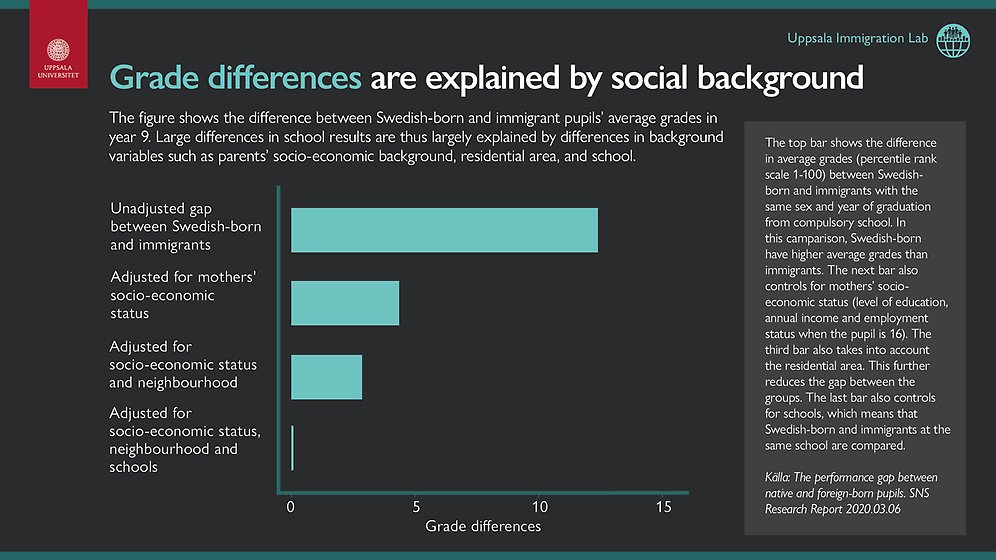Grade differences are explained by social background
The figure shows the difference between Swedish-born and immigrant pupils' average grades in year 9. The top bar shows the difference in average grades (percentile rank scale 1-100) between Swedish-born and immigrants with the same sex and year of graduation from compulsory school. In this camparison, Swedish-born have higher average grades than immigrants.
The next bar also controls for mothers' socio-economic status (level of education, annual income and employment status when the pupil is 16), comparing Swedish-born and immigrants with similar socio-economic background. Then we see that the gap between the groups is significantly reduced. The third bar also takes into account the residential area. This further reduces the gap between the groups.
The last bar also controls for schools, which means that Swedish-born and immigrants at the same school are compared. This contributes to a further reduction of the gap between the groups and the unexplained differences in average grades disappear almost completely. Large differences in school results are thus largely explained by differences in background variables such as parents' socio-economic background, residential area, and school.
About the article
Title: "The Performance Gap Between Native and Foregin-Born Pupils"
Authors: Hans Grönqvist and Susan Niknami
Journal: SNS

